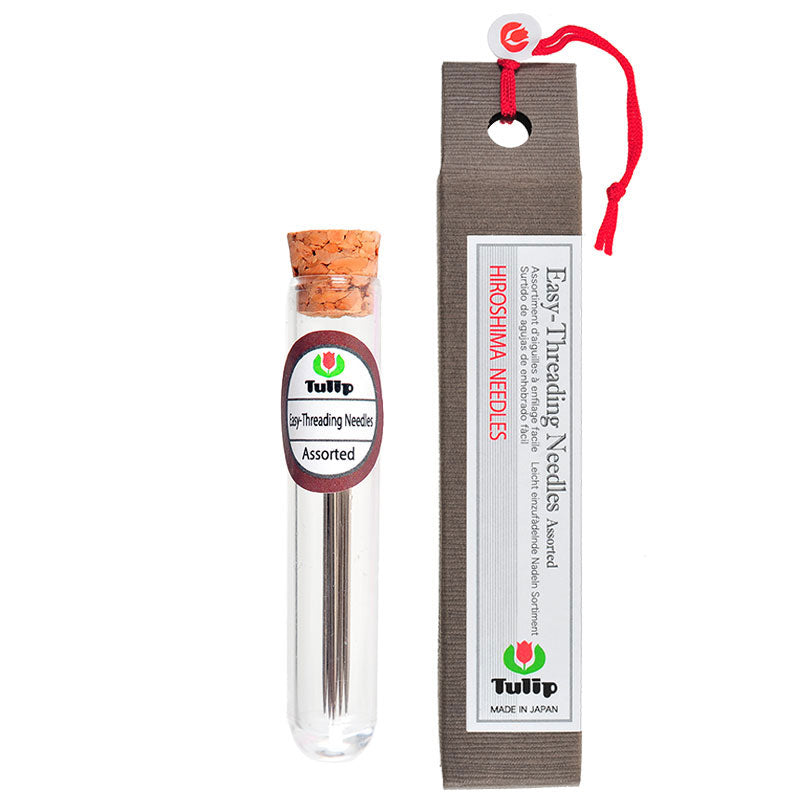
Tulip Sewing Needles Assorted - Easy Threading
These needles are polished lengthwise to ensure smooth fabric piercing. Contains 2 needles each of 3 different sizes.

|
A stitcher's needle is like a painter's brush: their most used tool, and the version of the tool you choose affects your creative experience as a whole. We've explained before how important it is to use the correct type of needle in regards to both stitch and thread. The type of needle isn't the only thing that matters though! The quality of your needle also plays a very important role in your stitching. One brand known for exceptional quality in all the products they create, but especially needles, is Tulip!
|

|

Tulip needles go through more than 30 processes to ensure that each needle is of the highest quality possible. The basics of what makes Tulip needles so amazing are:
- Easy to thread eye
- Flexible body
- Sharp point for smooth piercing
Polished lengthwise to minimize contact surface with fabrics The cherry on top of the sleek shape of Tulip needles is the flawlessly shaped eye. Designed to prevent snagging your fabric, the eye is still large enough to make threading as easy as possible.
The cherry on top of the sleek shape of Tulip needles is the flawlessly shaped eye. Designed to prevent snagging your fabric, the eye is still large enough to make threading as easy as possible. Tulip's precision-processing technology and surface treatment create a needle body that is extra smooth with the perfect amount of flexibility, making it easy on your hands while stitching, but difficult to bend or break.
Tulip's precision-processing technology and surface treatment create a needle body that is extra smooth with the perfect amount of flexibility, making it easy on your hands while stitching, but difficult to bend or break. With the perfectly shaped point for each type of needle in your arsenal, all Tulip needles have the supreme strength and durability of steel, while providing super smooth piercing through any fabric for effortless stitching.
With the perfectly shaped point for each type of needle in your arsenal, all Tulip needles have the supreme strength and durability of steel, while providing super smooth piercing through any fabric for effortless stitching.
Tulip has progressed their cutting, grinding, and polishing technologies for over 50 years, with a devout dedication to maintaining the highest quality. Every needle they produce is put through extensive testing and processes to ensure they meet the standard Tulip is known for.
So how are Tulip needles made?
1. Wire Drawing
The wire is extruded in the size needed for that type of needle
- Straight Cut
Wire is stretched and cut equal to the length of two needles
3. Point Grinding
The needle goes through repeated grinding to sharpen
- Head Shaping
The eye is stamped and the two needles are split
5. Round Grinding
The sides of the eye are ground down to make it smooth
6. Hardening & Tempering
Very important processes that give the needle hardness and elasticity
- Body Grinding
Needle surface is polished by rotating the needle in polishing agent and oil

8. Point Sharpening
Repeated grinding sharpens the point
9. Nickel Plating
Needle is plated with nickel, with the eye of some being plated with gold
- Inspection
The eye of every Tulip needle is closely inspected
Try out these incredible needles for yourself and experience what over 300 years worth of history has lead up to!
Credit for this wonderful presentation goes to Sue Spargo.
Quick View


